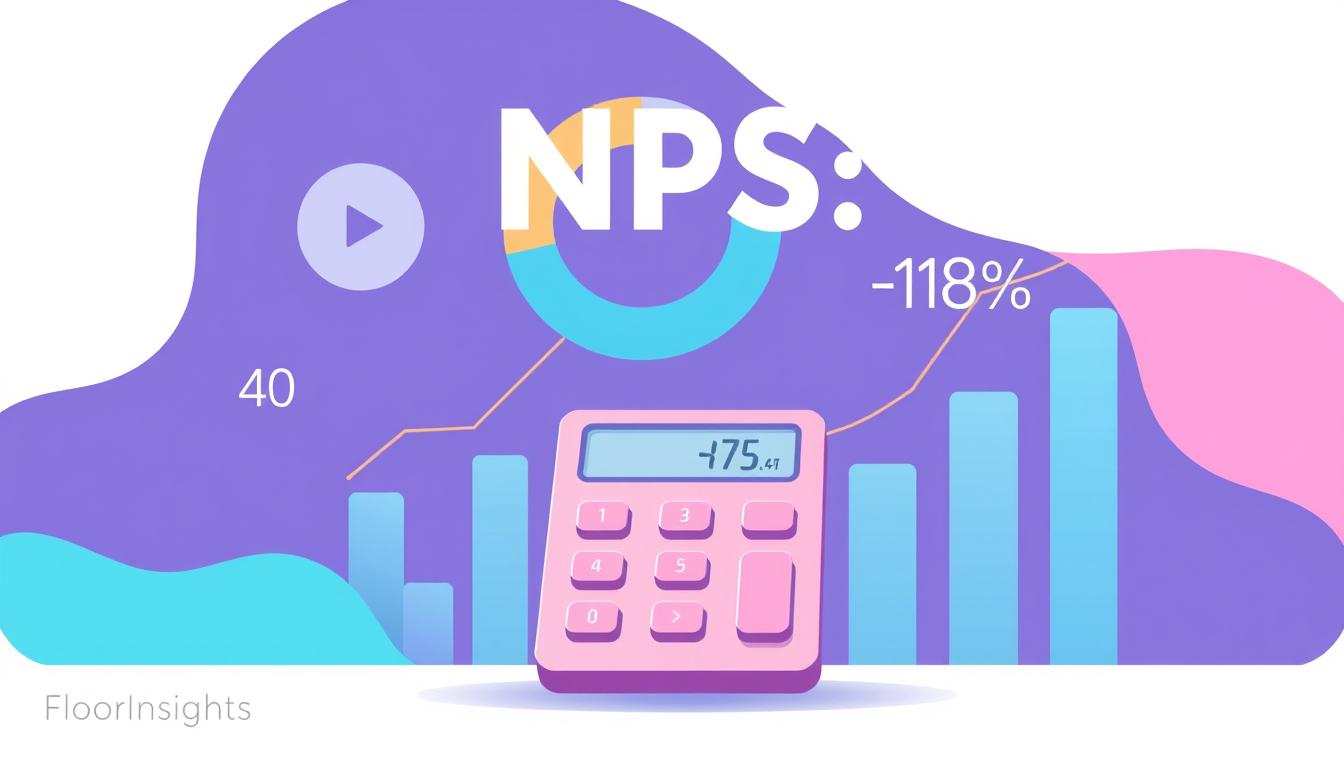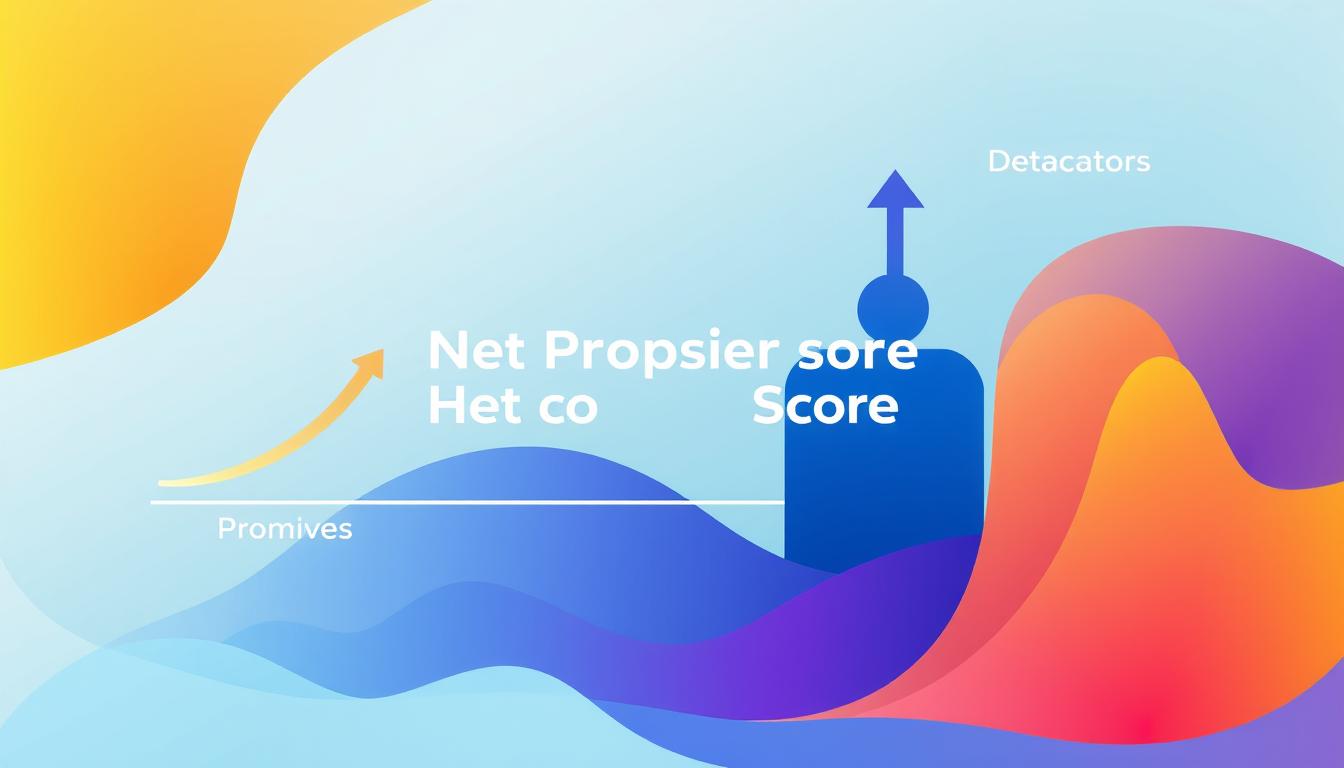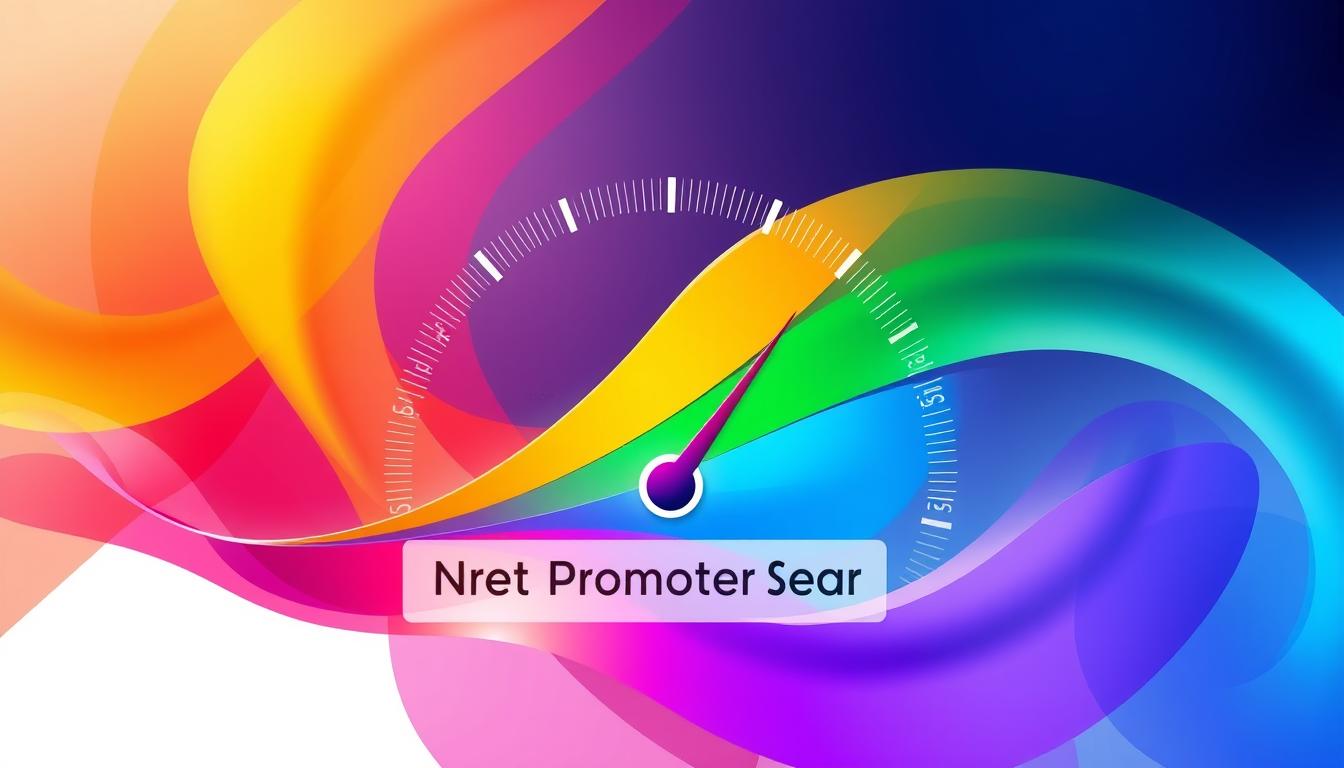In today’s fast-paced digital landscape, understanding our customers has become essential for sustainable growth. The Net Promoter Score (NPS) is a powerful tool that helps us assess customer loyalty and satisfaction across various digital touchpoints. By prioritizing NPS measurement in our digital transformation efforts, we gain valuable insights into customer feedback that guide us in shaping effective interactions and enhancing our brand strategies. As we navigate this digital shift, emphasizing NPS enables us to remain attuned to customer sentiments, paving the way for informed, data-driven decisions that not only improve user experience but also boost our overall performance.
Key Takeaways
- The Net Promoter Score is crucial for measuring customer loyalty.
- Understanding customer feedback helps navigate digital transformation.
- NPS insights guide effective customer interactions.
- Prioritizing NPS contributes to brand strategy enhancement.
- Data-driven decisions lead to improved user experiences.
The Importance of NPS in the Digital Age
In today’s fast-paced digital environment, understanding customer loyalty plays a pivotal role in business success. NPS, or Net Promoter Score, provides a clear benchmark for assessing loyalty and satisfaction among our customers. By categorizing clients into promoters, passives, or detractors, NPS offers a comprehensive view of how likely our customers are to recommend our brand to others.
Understanding Customer Loyalty
Customer loyalty is more than just repeat business; it’s about forming genuine connections with our audience. Emphasizing NPS allows us to gauge how our service or product is resonating with clients. Leveraging digital metrics through NPS results not only enhances our understanding of customer loyalty but also shapes our strategies in meeting their expectations. Implementing effective feedback collection methods ensures that we continuously align our services with customer needs.
How NPS Reflects Customer Experience
NPS serves as a direct indicator of customer experience by quantifying feedback across various digital touchpoints. Each score we receive provides insights into the customer journey, highlighting areas for improvement and opportunities for growth. Understanding these aspects empowers us to tailor our offerings, thus enriching the overall customer experience. With an informed approach, we can foster loyalty and drive sustainable growth.
What is Net Promoter Score?
The Net Promoter Score serves as a vital customer loyalty metric, allowing us to assess how likely customers are to recommend our products or services. This invaluable insight hinges on the principles of the Net Promoter System, which categorizes customers into three distinct groups: promoters, passives, and detractors. Such segmentation empowers us to pinpoint areas that require improvement and reinforces our commitment to enhancing customer relationships.
Defining the Net Promoter System
The Net Promoter System originated from the work of Fred Reichheld, aiming to create a structured approach to customer feedback. By assigning a score based on customers’ likelihood to recommend, we gain clarity on their overall satisfaction. Promoters, who score 9-10, exhibit loyalty and enthusiasm, while passives, scoring 7-8, remain neutral. Detractors, with scores of 0-6, can significantly impact our brand perception. Understanding these categories allows us to strategize effectively for better outcomes.
The Significance of NPS in Business Growth
Research indicates organizations that maintain high Net Promoter Scores often experience superior business growth compared to their competitors. This correlation stems from our ability to leverage customer feedback for data-driven decisions. By analyzing responses, we can enhance product offerings, tailor services, and foster customer retention. A focus on NPS not only drives profitability but also cultivates a community of loyal customers who advocate for our brand.
Choosing the Right NPS Survey Platform
Selecting the most suitable NPS survey platform is essential for maximizing our insights from customer feedback. A well-chosen platform can significantly influence the effectiveness of our monitoring and response strategies.
Key Features to Look For
When evaluating an NPS survey platform, we should consider several key features:
- Customizable templates: These allow us to tailor questions to fit our brand’s voice and specific customer touchpoints.
- Real-time reporting: This feature helps us analyze feedback promptly, enabling us to act quickly on insights.
- User-friendly interface: An intuitive design makes it easier for our team to navigate the platform and utilize its capabilities.
- Integration capabilities: Effective platforms should seamlessly integrate with our existing tools, enhancing our data collection efforts across various channels.
Comparing Top NPS Tools
In comparing top NPS tools, we must assess their distinct functionalities, pricing plans, and customer support services. The following table outlines a few popular options:
| NPS Tool | Key Features | Price Range | Customer Support |
|---|---|---|---|
| SurveyMonkey | Custom templates, analytics dashboard, integration options | $25 – $85/month | Email & Chat Support |
| Qualtrics | Advanced analytics, real-time feedback, customizable surveys | Contact for pricing | 24/7 Support |
| Zonka Feedback | Multichannel data collection, offline surveys, automated reports | $25 – $299/month | Email & Live Chat |
Integrating NPS Across Digital Touchpoints
Integrating NPS across various digital touchpoints allows us to gain a comprehensive perspective on customer sentiment. By emphasizing multichannel feedback, we can gather insights from every stage of the customer journey, including post-purchase experiences, website interactions, and customer service engagements. This approach helps us understand how each interaction impacts overall customer loyalty.
Importance of Multichannel Feedback
Collecting feedback from multiple channels empowers us to capture the diverse experiences of our customers. When we utilize multichannel feedback, we can better identify trends and areas for improvement across different platforms. Each interaction offers unique insights, making it essential to understand how our customers perceive their experiences with our brand.
Best Practices for Collecting NPS Data
To enhance our data collection strategies, we must adhere to best practices when designing NPS surveys. Some effective strategies include:
- Timing the survey appropriately to capture genuine feedback.
- Asking clear and concise questions that are easy to understand.
- Ensuring mobile compatibility for maximizing response rates.
- Implementing follow-up questions to delve deeper into customer feedback.
These strategies enable us to gather detailed feedback that informs necessary adjustments aimed at enhancing the customer experience further.
Analyzing NPS Scores and Insights
Understanding the intricacies of analyzing NPS scores enables us to uncover valuable feedback that can shape our customer experience strategies. By focusing on NPS metrics, we gain insights into customer loyalty trends, which are pivotal for driving business growth. Our analysis should encompass critical components such as the overall score, the percentages of promoters versus detractors, and changes observed over time.
Understanding NPS Metrics
NPS metrics reveal distinct patterns in customer loyalty. When we track these figures over time, we can identify shifts in customer sentiment. For instance, segmenting scores by demographics or purchasing behaviors allows us to pinpoint specific groups that may require targeted engagement strategies. This segmentation not only enhances our customer feedback analysis but also helps tailor our approach to meet diverse needs effectively.
How to Interpret Customer Feedback
Interpreting customer feedback involves looking beyond numerical scores to delve into qualitative responses. These insights often reveal the motivations and sentiments behind a customer’s rating. By adopting robust data analysis techniques, we can uncover trends and themes that inform our understanding of customer expectations. This process leads to actionable insights that can guide improvements in our offerings and customer engagement practices.

Leveraging Net Promoter Score Software
Utilizing NPS software significantly improves our operations, especially in the context of conducting automated surveys. These tools streamline the process and enable us to gather crucial feedback with remarkable efficiency in data collection. By implementing automation, we can enhance customer engagement through timely follow-ups and more personalized interactions.
Automating NPS Surveys
Automating NPS surveys allows us to ensure that feedback is collected consistently and in real-time. This capability means we can promptly address customer sentiments and identify areas needing improvement. With this system in place, we free up valuable resources while maximizing our insight-gathering efforts.
Moreover, many NPS software options come equipped with advanced analytics features. These tools help us track trends and visualize the data effectively, which in turn supports improved decision-making related to customer experience enhancements. Leveraging NPS technologies empowers us to stay ahead in a competitive landscape, optimizing our strategies as we receive ongoing feedback on customer engagement.
Developing an Actionable NPS Strategy
Constructing an actionable NPS strategy is essential for cultivating a deeper understanding of our customers. A focused plan enables us to set clear and measurable objectives. By establishing customer improvement goals, we can leverage NPS insights to influence decision-making and foster meaningful interactions with our clientele.
Setting Goals for Customer Improvement
When we set goals for customer improvement, we first examine the data collected through NPS surveys. Identifying key metrics, such as retention rates and feedback scores, helps us create a robust performance measurement framework. These objectives guide our initiatives, ensuring that we target areas that need enhancement while tracking our progress.
Aligning NPS with Business Objectives
Aligning our NPS strategy with overarching business objectives ensures that customer feedback informs our organizational priorities. By integrating NPS into our business strategy, we can prioritize initiatives that enhance customer experience, ultimately contributing to our growth narrative. This systematic connection between customer feedback and business performance empowers us to advance our aims effectively.
| Customer Improvement Goals | Relevant Metrics | Business Objectives |
|---|---|---|
| Increase Customer Retention | Retention Rates | Enhance Customer Loyalty |
| Improve Customer Satisfaction | Satisfaction Scores | Boost Revenue Growth |
| Enhance Service Quality | Feedback Ratings | Expand Market Share |
Case Studies: Successful NPS Implementation
Examining case studies of successful NPS implementation provides us with valuable business insights. By studying real-world examples, we can gauge the effectiveness of NPS strategies and adapt them to our organization.
Real-World Examples of NPS in Action
Apple showcases a remarkable instance of NPS in action. The company actively seeks customer feedback to refine product launches and improve existing offerings. This approach has noticeably strengthened brand loyalty among consumers.
Another standout example is Amazon, which utilizes NPS as a strategic tool for guiding service enhancements. Continuous attention to customer feedback has led to increased satisfaction levels, solidifying Amazon’s position in the market.
Lessons Learned from Leading Brands
Reflecting on these case studies reveals several essential lessons. Taking action on customer feedback is critical. Leading brands foster a culture that prioritizes continuous improvement, making it imperative for us to follow suit.
- Regularly analyze feedback to identify areas for improvement.
- Integrate NPS insights into the overall business strategy.
- Encourage a company-wide commitment to enhancing customer experiences.
Challenges of Measuring NPS in Digital Transformation
Measuring NPS in the landscape of digital transformation poses several challenges that deserve our attention. Addressing these challenges of measuring NPS involves a proactive approach in identifying common pitfalls while striving for effective NPS adoption.
Identifying Common Pitfalls
Several factors can hinder the successful measurement of NPS, including:
- Survey Fatigue: Excessive surveys can lead to lower engagement and response rates.
- Low Response Rates: A lack of engagement from customers can skew the accuracy of our results.
- Improper Timing: Conducting surveys at inappropriate moments may fail to capture the authentic sentiment of customers.
Recognizing these pitfalls enables us to refine our methodology and ensure better outcomes from our NPS efforts.
Overcoming Resistance to NPS Adoption
Resistance often arises from a lack of understanding regarding the value of NPS within organizations. To facilitate smoother NPS adoption, we should focus on:
- Education: Informing stakeholders about the advantages of NPS can foster a culture of feedback.
- Resource Allocation: Ensuring adequate resources for implementing and managing NPS processes encourages commitment.
- Demonstrating Value: Using actionable insights from NPS to influence strategic decisions can showcase its worth.
By embracing best practices and maintaining a structured approach, we can create a robust framework for measuring NPS that flourishes in a digital-first environment.
| Common Pitfalls | Overcoming Strategies |
|---|---|
| Survey Fatigue | Limit the number of surveys and ensure they are strategically timed. |
| Low Response Rates | Enhance the survey design to be user-friendly and engaging. |
| Improper Timing | Conduct surveys immediately following interaction or purchase. |
| Lack of Understanding | Provide training and resources to increase awareness of NPS benefits. |
| Insufficient Resources | Allocate dedicated budget and personnel for the NPS process. |
Conclusion
In summation, leveraging the Net Promoter Score across digital touchpoints is critical for understanding customer loyalty and satisfaction. As we adapt to the ongoing digital transformation, the insights derived from NPS scores offer valuable opportunities to enhance customer experiences, drive customer retention, and stimulate sustainable growth.
By establishing a comprehensive NPS strategy, we demonstrate our commitment to listening to customer feedback and implementing informed improvement strategies that cater to both our customers’ needs and organizational objectives. This alignment is essential for fostering a culture of feedback within our business.
As we embrace these data-driven approaches, we position ourselves to navigate and thrive in the ever-evolving digital landscape. Ultimately, this commitment will lead to enhanced customer loyalty and contribute significantly to our organizational success in a competitive market.
FAQ
What is the Net Promoter Score (NPS)?
The Net Promoter Score (NPS) is a customer loyalty metric designed to measure how likely customers are to recommend a company’s products or services to others. It categorizes respondents into promoters, passives, and detractors, giving businesses insights into customer satisfaction and loyalty.
How can NPS insights drive digital transformation?
What are the key features to consider when choosing an NPS survey platform?
Key features to look for in an NPS survey platform include customizable survey templates, real-time reporting capabilities, user-friendly interfaces, and integration options with existing tools. These features enhance our ability to collect and analyze customer feedback effectively.
How do we analyze NPS scores for actionable insights?
Analyzing NPS scores involves calculating the overall score, the percentage of promoters versus detractors, and tracking trends over time. We should also segment scores by demographics and examine qualitative feedback to uncover deeper customer insights.
Why is multichannel feedback important for NPS collection?
Multichannel feedback is important because it allows us to capture insights from various stages of the customer journey, such as post-purchase interactions and customer service engagements. This comprehensive view of customer sentiment helps us tailor our strategies effectively.
What are best practices for collecting NPS data?
Best practices for collecting NPS data include timing the survey strategically, asking clear and concise questions, ensuring the survey is mobile-friendly, and following up with open-ended questions to gather more in-depth customer feedback.
How can we align our NPS initiative with business objectives?
We can align our NPS initiative with business objectives by setting clear goals for customer improvement based on NPS data. Incorporating customer feedback directly into our broader strategic planning helps prioritize initiatives that enhance customer experience and drive growth.






